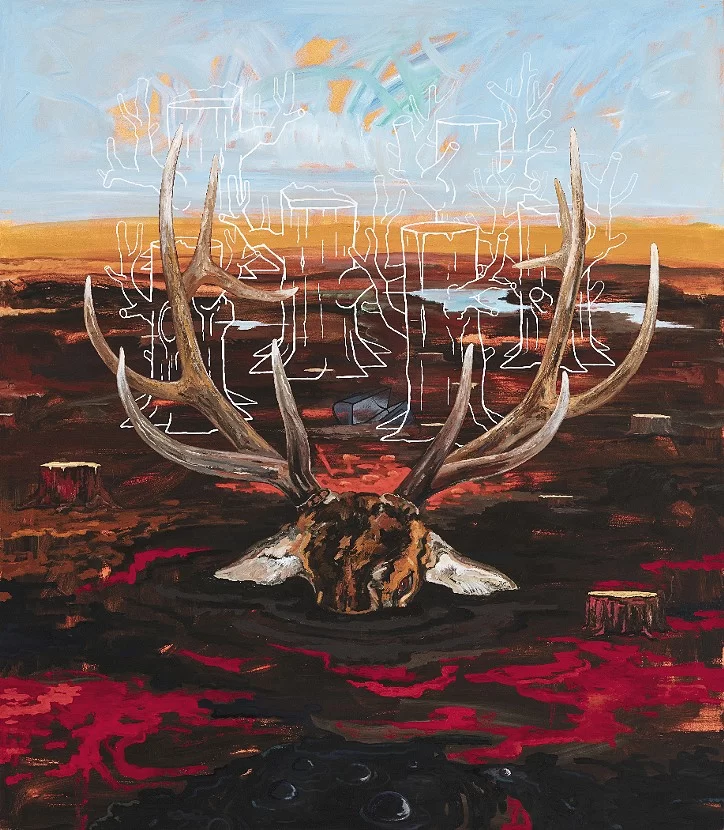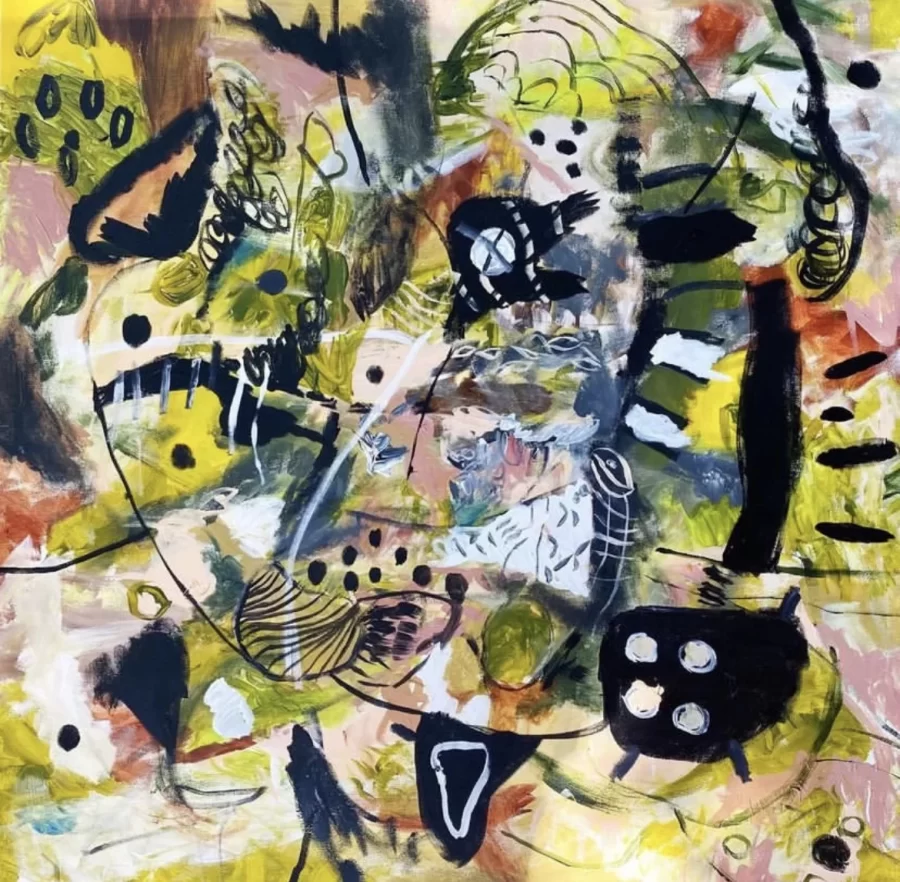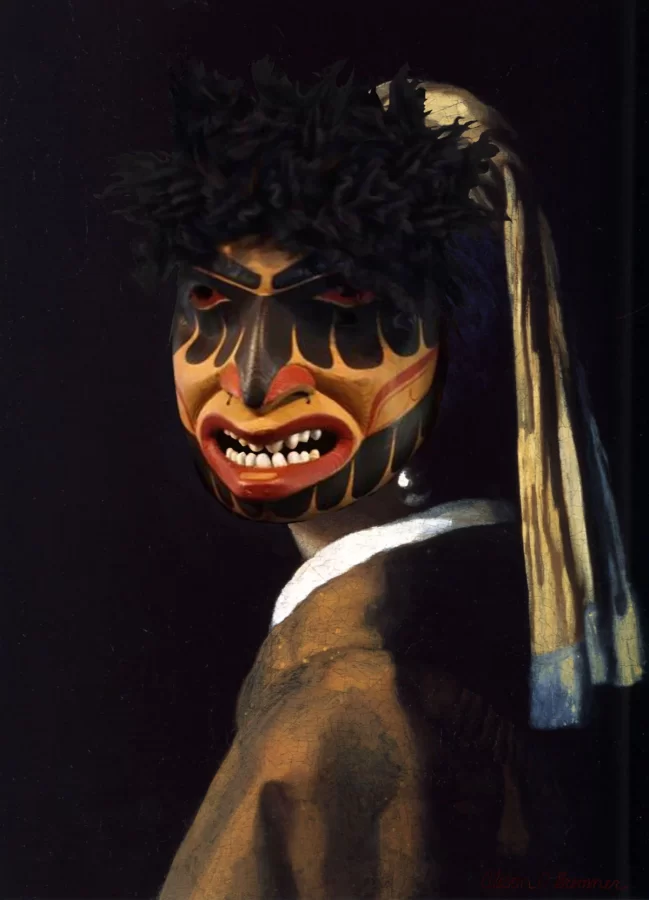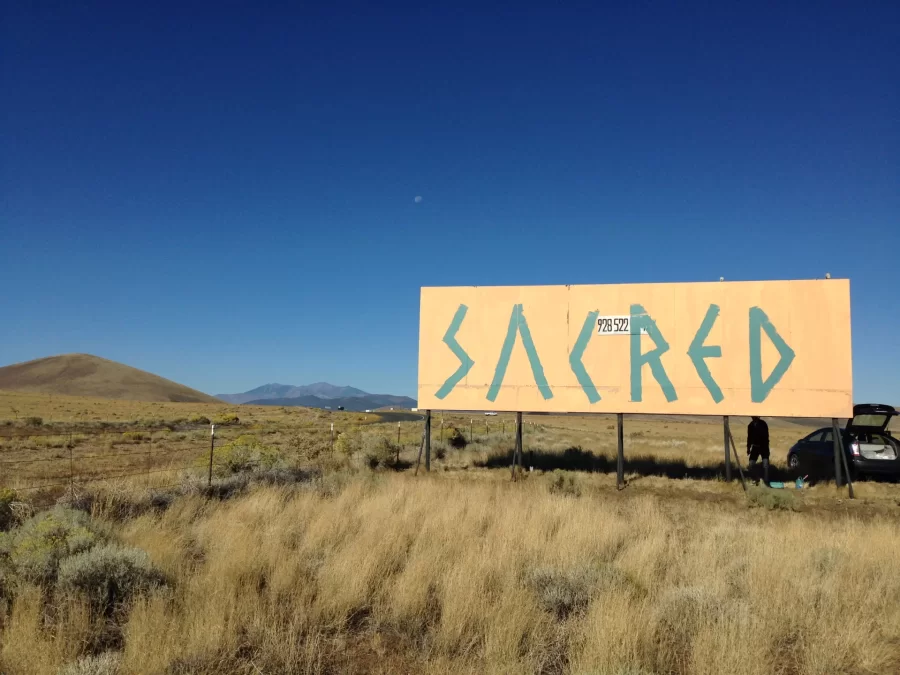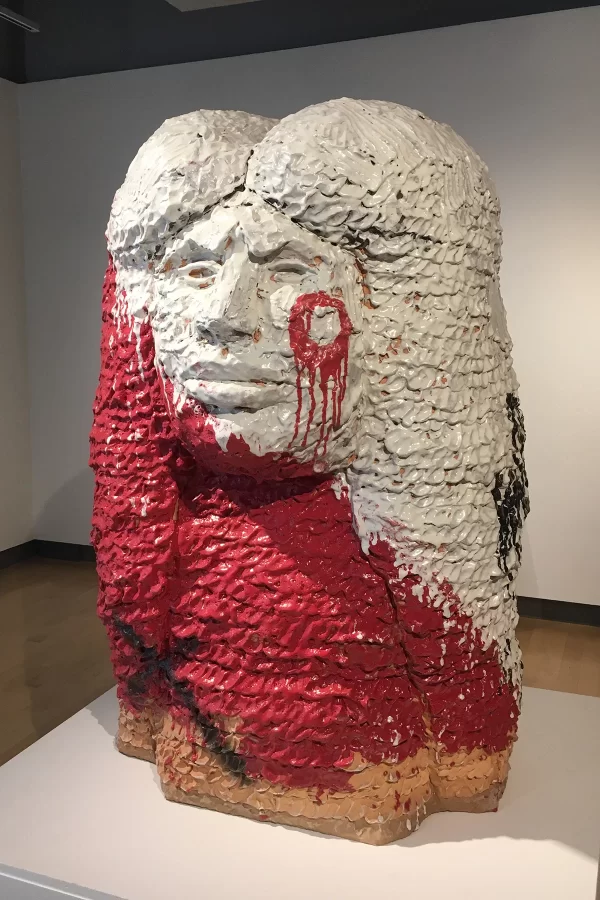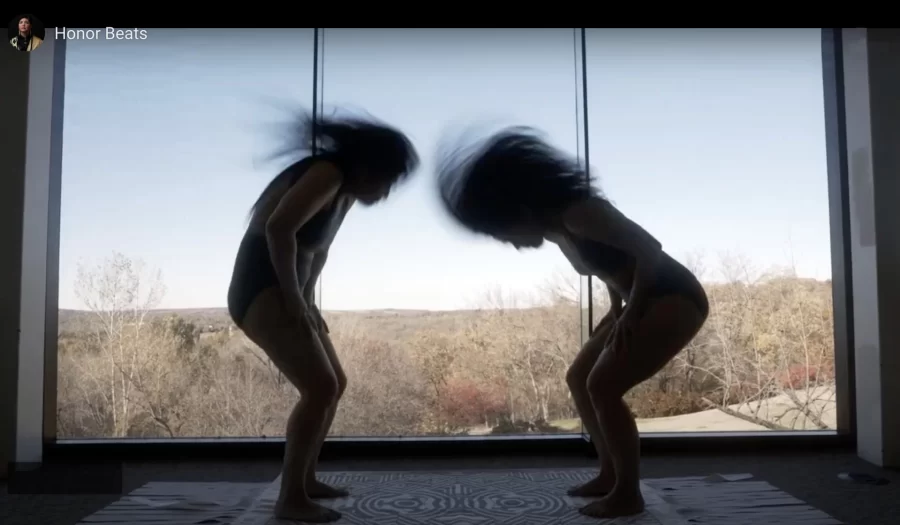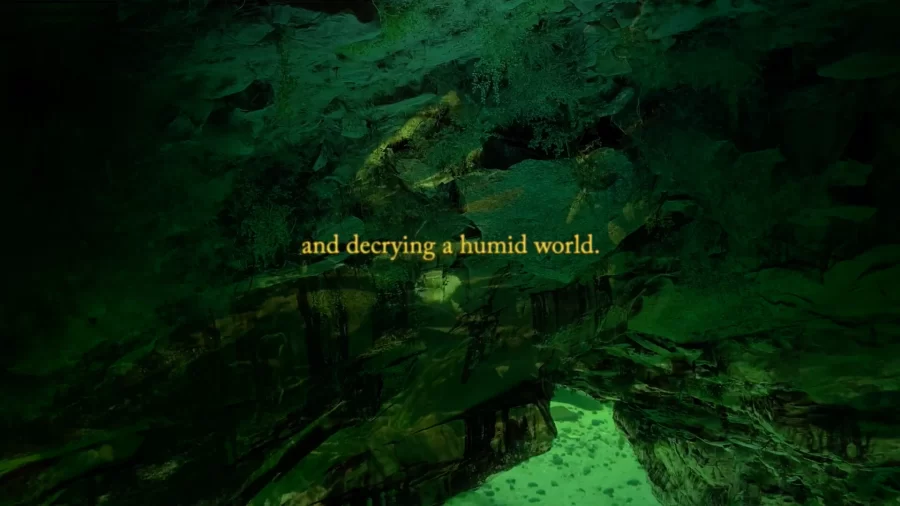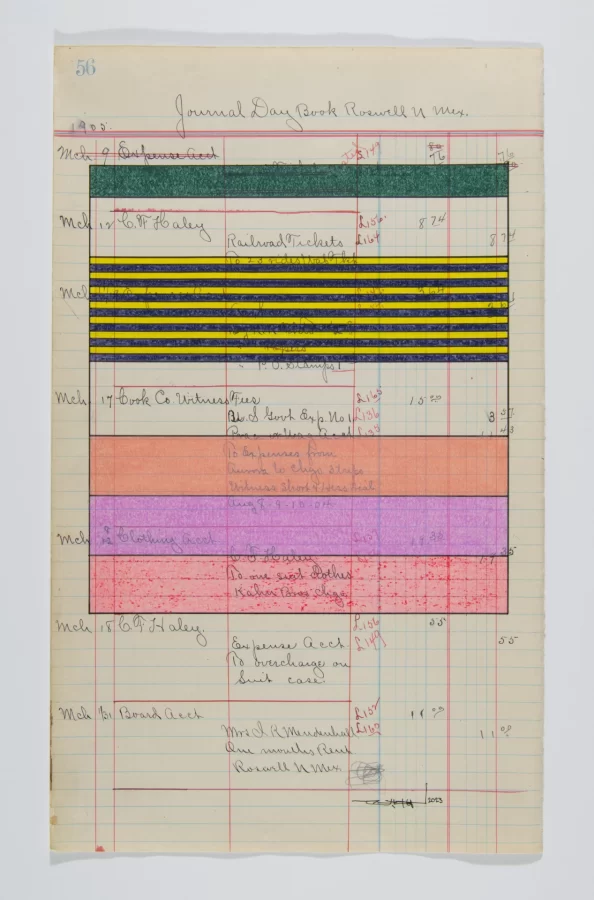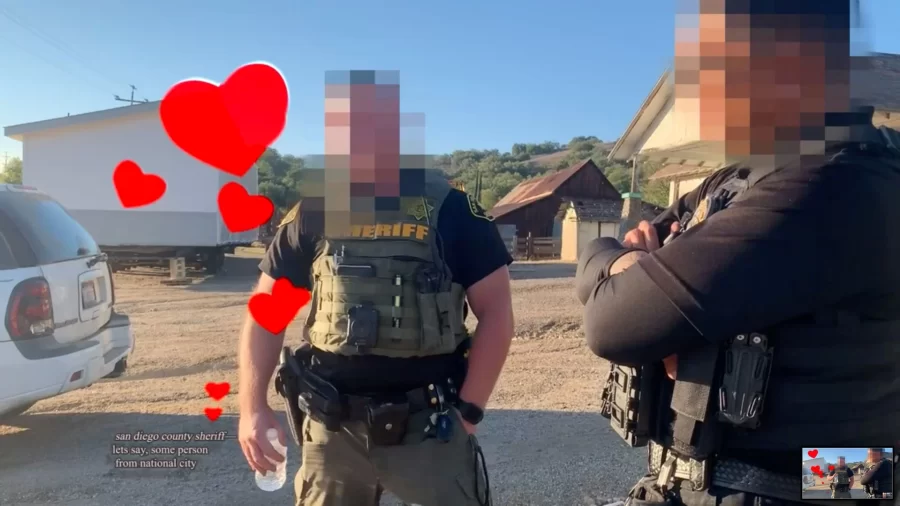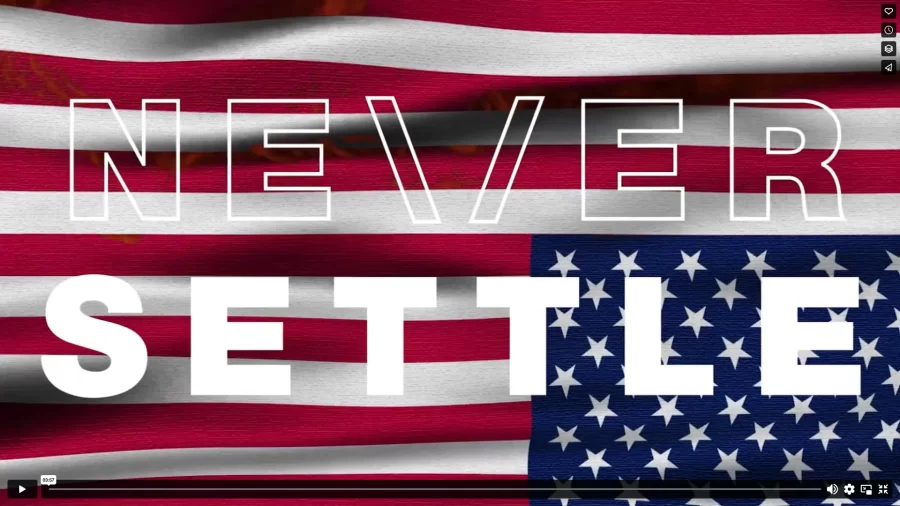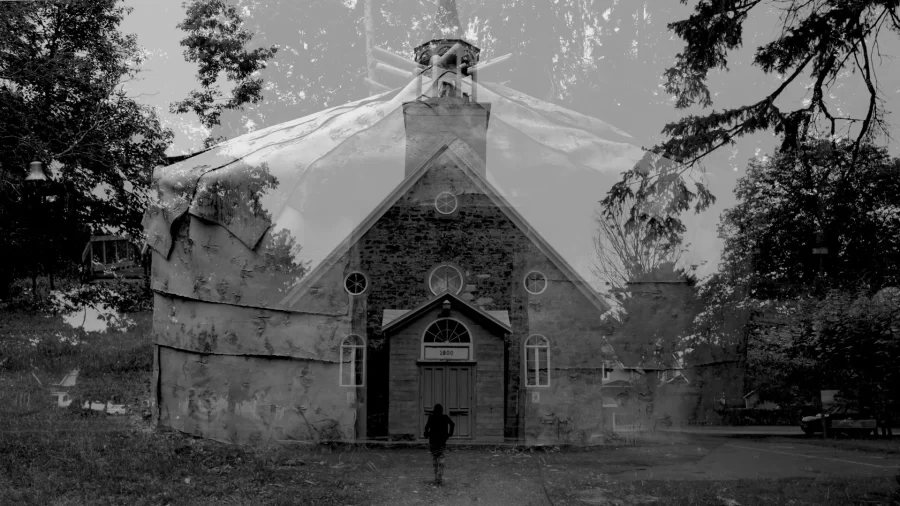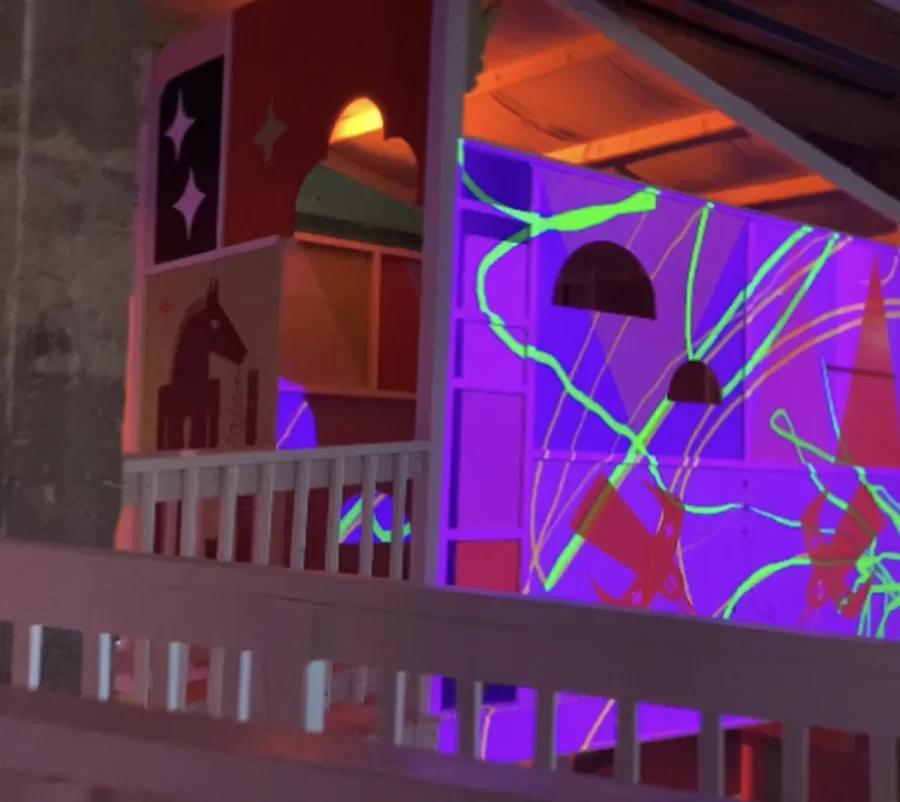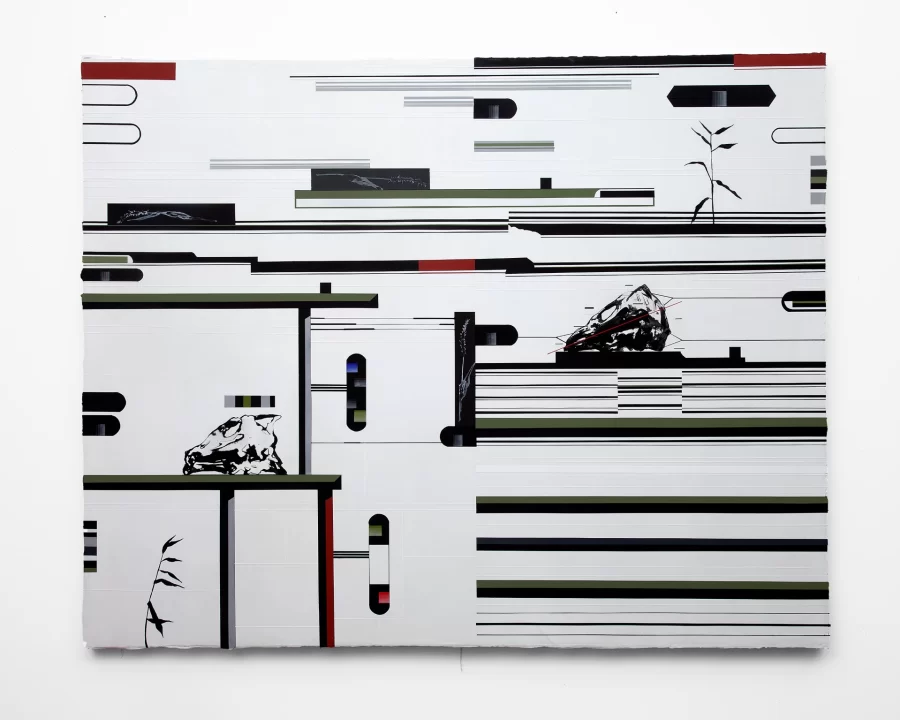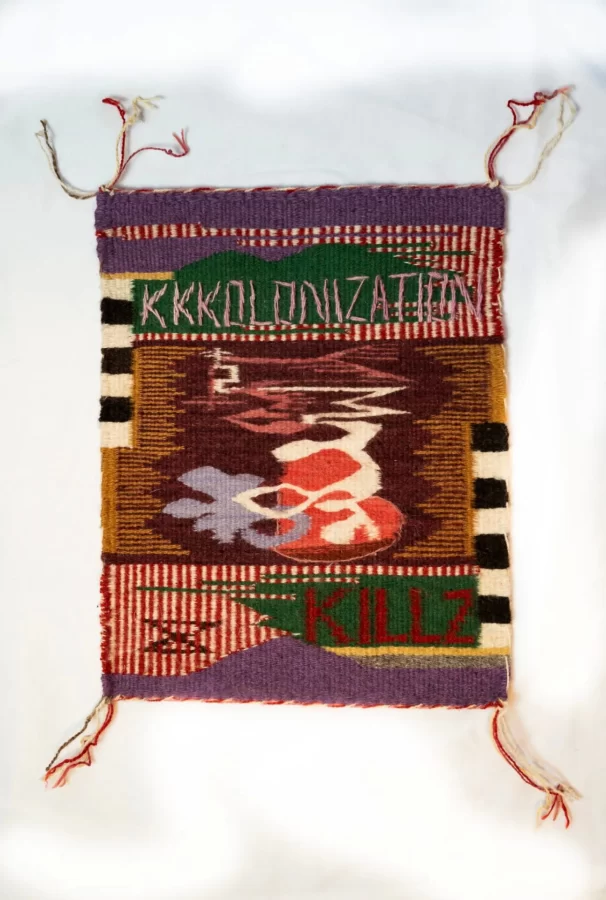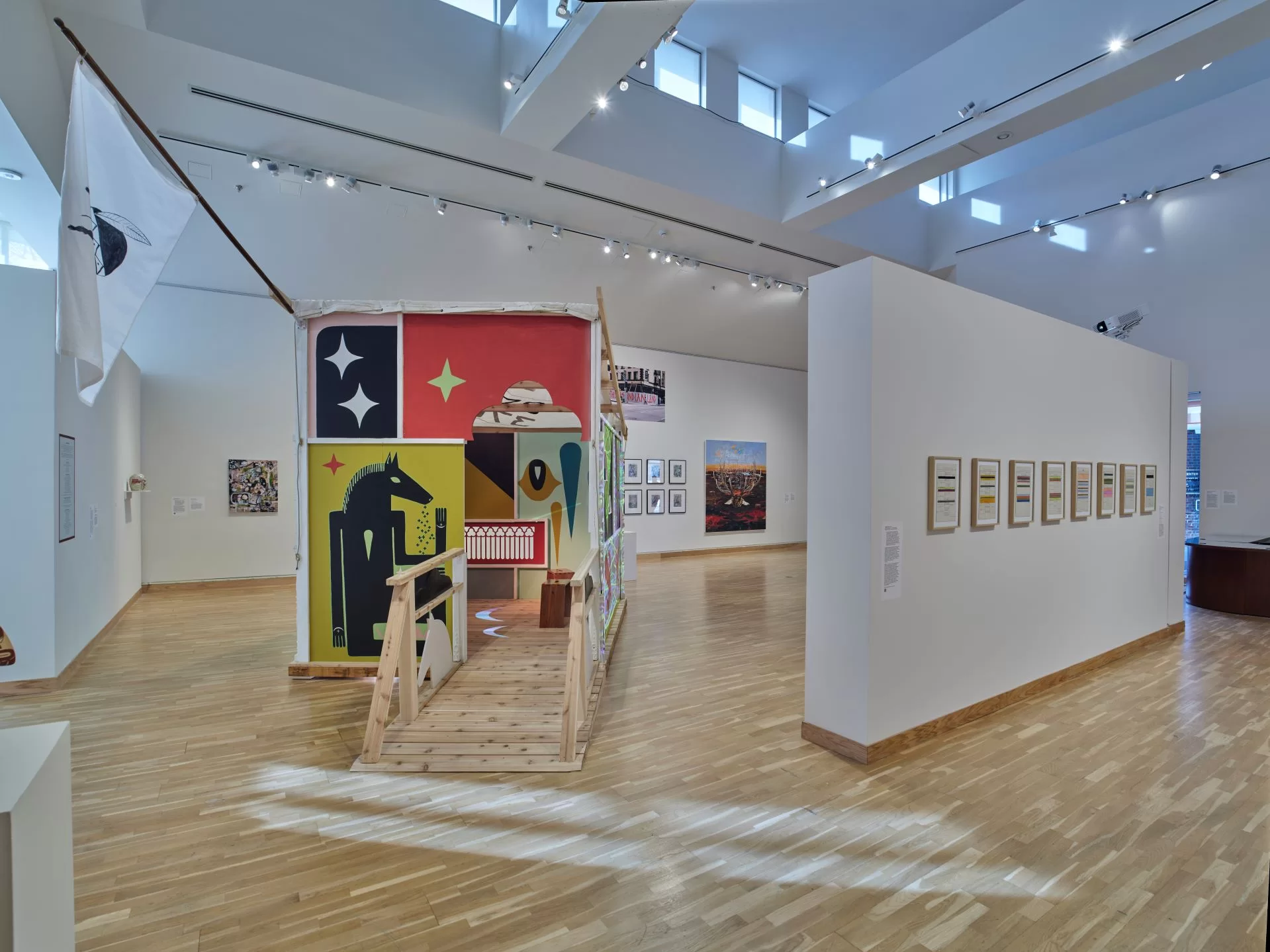
+ EXPLODING NATIVE INEVITABLE +
October 27, 2023 – March 4, 2024
+ an exhibition of contemporary Indigenous art from the land we now call America +
NORMAN AKERS | NIZHONNIYA AUSTIN | ALISON BREMNER
JAQUE FRAGUA | RAVEN HALFMOON | ELISA HARKINS
SKY HOPINKA | TERRAN LAST GUN | FOX MAXY
NEW RED ORDER | MALI OBOMSAWIN & LOKOTAH SANBORN | SARAH ROWE
DUANE SLICK | TYRRELL TAPAHA
Curated by Brad Kahlhamer and Dan Mills
Exploding Native Inevitable is an exhibition of the work of twelve contemporary Indigenous artists and two collaboratives, accompanied by an ongoing program of dance, film, music, performance, readings, story-telling, and video by Indigenous artists from a land we now call America. Exhibiting artists range from emerging to elders. “They are amazing voices, make compelling art, and have important things to say,” said co-curator Brad Kahlhamer. He continued, “The artists build on cultural traditions, push new creative boundaries, and represent some of the extraordinary work being created by Indigenous artists across the land.”
Exhibition co-curators Brad Kahlhamer and Dan Mills, who have known each other for over twenty years, began work on this project in late 2019. “This has been a remarkable multi-year collaboration with Brad Kahlhamer,” said Dan Mills. “Brad is a Native American artist who is respected in contemporary Indigenous circles, and who has exhibited extensively in the US and abroad. He brings deep knowledge and keen insights to this project.”
The exhibition title riffs on Andy Warhol’s 1966-67 Exploding Plastic Inevitable, a series of multimedia events–including performance, concerts, and film screenings–that accompanied and extended his exhibition. Likewise, the expansive and adventuresome project that is Exploding Native Inevitable will include a wide-ranging and ongoing series of events and programs. During the exhibition’s run at Bates, the project will explode beyond the museum across campus and into the community with collaborations that bring in performers, filmmakers, and writers from the surrounding region and throughout the nation.
After closing at Bates, the exhibition will travel to Scottsdale Museum of Contemporary Art, Scottsdale, Arizona, August 10, 2024 – January 5, 2025; Sheldon Museum of Art, University of Nebraska, Lincoln, Nebraska, February 7 – July 12, 2025; and Nora Eccles Harrison Museum of Art, Utah State University, Logan, Utah, August 29 – December 12, 2025.
THE ARTISTS
NORMAN AKERS (Osage Nation, b. 1958, Fairfax, Oklahoma; lives in Lawrence, Kansas) makes paintings that often employ narrative as a form of visual dialogue. He uses images and symbols drawn from his cultural heritage, life experiences, and contemporary culture to address identity, Osage mythos, removal, disturbance, and the struggle to claim cultural context.
Artist and musician NIZHONNIYA AUSTIN (Diné/Tlingit, b. 1990, Juneau, Alaska; lives in Santa Fe, New Mexico) works abstractly, making expressionistic paintings guided by process and instinctive expression, and often painting in an earthy palette reminiscent of Tlingit art.
Tlingit artist and language advocate ALISON BREMNER (Tlingit, b. 1989, Southeast Alaska; lives in Seattle, Washington) addresses cultural appropriation with subversive humor, reimagining traditional Tlingit themes in contemporary materials and with Western cultural mashups.
JAQUE FRAGUA (Jemez Pueblo, b. 1986, Santa Fe, New Mexico; lives in Albuquerque) draws from punk, graffiti, protest art, and traditional Native American aesthetics, creating paintings and murals of visual resistance and public interventions that repurpose his culture’s iconography.
RAVEN HALFMOON (Caddo Nation, b. 1991 and lives in Norman, Oklahoma) makes large, powerful, and expressive hand-built ceramic sculptures primarily of Caddo female heads and figures, with glazes of symbolic colors informed by a long Caddo tradition to contemporary art.
Artist and composer ELISA HARKINS (Muscogee/Creek Nation, b. 1978, Miami, Oklahoma; lives in Muscogee Reservation, Oklahoma) makes innovative, interdisciplinary, and collaborative multimedia work in performance, electronic music, and sculpture. Her work is concerned with translation and transformation–preserving, exploring, and sharing Indigenous language and music.
SKY HOPINKA (Ho-Chunk Nation of Wisconsin/Pechanga Band of Luiseño Indians, b. 1984, Ferndale, Washington; lives in New York City, New York) layers documentary-style and abstract imagery with sound and language in short and feature films and videos, creating an innovative cinematic language that represents Indigenous histories and contemporary experiences.
Using a personal iconography, TERRAN LAST GUN (Piikani/Blackfeet, b. 1989, Browning, Montana; lives in Santa Fe, New Mexico) continues the tradition of Blackfeet ledger drawings by making vivid abstract work on antique settler ledger paper that symbolically explores subjects from animals and cultural forms to nature, sky, and the cosmos.
Artist and filmmaker FOX MAXY (Mesa Grande Band of Mission Indians and Payómkawichum, b. 1992 and lives in San Diego) makes films combining their footage of friends and family, cultural and current events, and invented digital imagery, edited into rapid-fire stream-of-consciousness experimental films that are abstract and diaristic.
NEW RED ORDER– whose core members are Adam Khalil (Ojibway, b. 1988, Sault Ste. Marie, Michigan; lives in Nyack, New York), Zack Khalil (b. 1991, Sault Ste. Marie, Michigan; lives in Brooklyn, New York), and Jackson Polys (Tlingit, b. 1976, Ketchikan, Alaska; lives in New York City, New York) – is a public secret society that collaborates with informants to create exhibitions, videos, and performance works that question and rechannel subjective and material relationships to Indigeneity.
The video Wawasint8da is a collaborative project. MALI OBOMSAWIN (Abenaki First Nation, b. 1995, Stratford, New Hampshire; lives in Portland, Maine) is a musician, composer, and bandleader who tells Indigenous stories through melding Wabanaki music, chorale-like spirituals, and free jazz/improvised music. LOKOTAH SANBORN (Penobscot, b. 1995, Bangor, Maine; lives in Old Town, Maine) utilizes abstract approaches to film, photography, and graphic design to highlight the perseverance of Wabanaki people amid ongoing colonial domination and environmental injustices.
SARAH ROWE (Lakota, Ponca, b. 1981 and lives in Omaha, Nebraska) creates paintings, sculpture, and performance that combine traditional Indigenous iconography, personal forms, and popular culture, and draw on the energy of Heyoka, the sacred clown of the Lakota. In doing this, she playfully and enchantingly reimagines Native American symbology of animals and mythic creatures.
In multilayered Coyote images and reductive paintings, DUANE SLICK (Meskwaki/Sauk and Fox Tribe of the Mississippi in Iowa, b.1961, Waterloo, Iowa; lives in North Providence, Rhode Island) makes compelling paintings that combine the concerns of Modernist abstraction and beliefs and traditions of Native American heritage.
Sixth generation sheepherder TYRRELL TAPAHA (Diné, b. 1999, Diné Bikéyah/Navajo Nation/Four Corners region of Arizona, Colorado, New Mexico, Utah; lives in Flagstaff, Arizona) is a Diné weaver and fiber artist whose textiles, made with raw natural fibers predominantly grown and hand-dyed with local flora, are tied to a life intimately interwoven with feelings, memories, and experiences tied to place and tradition.
Supported by the Synergy Fund Interdisciplinary Museum Exhibitions Program and Jane Costello Wellehan Endowment Fund.
